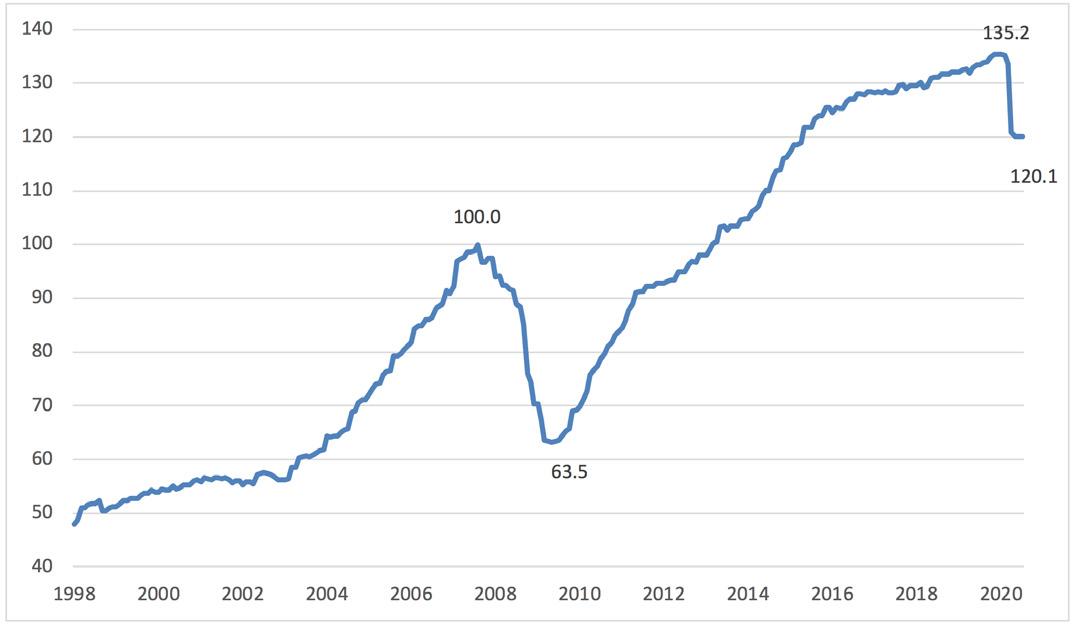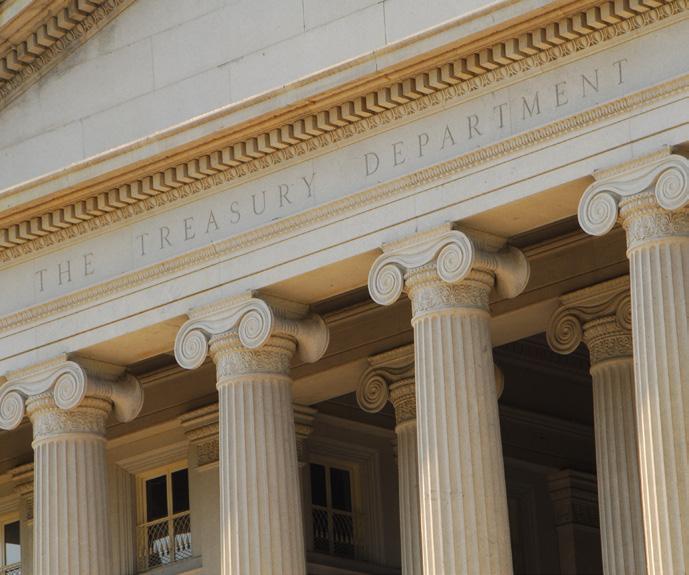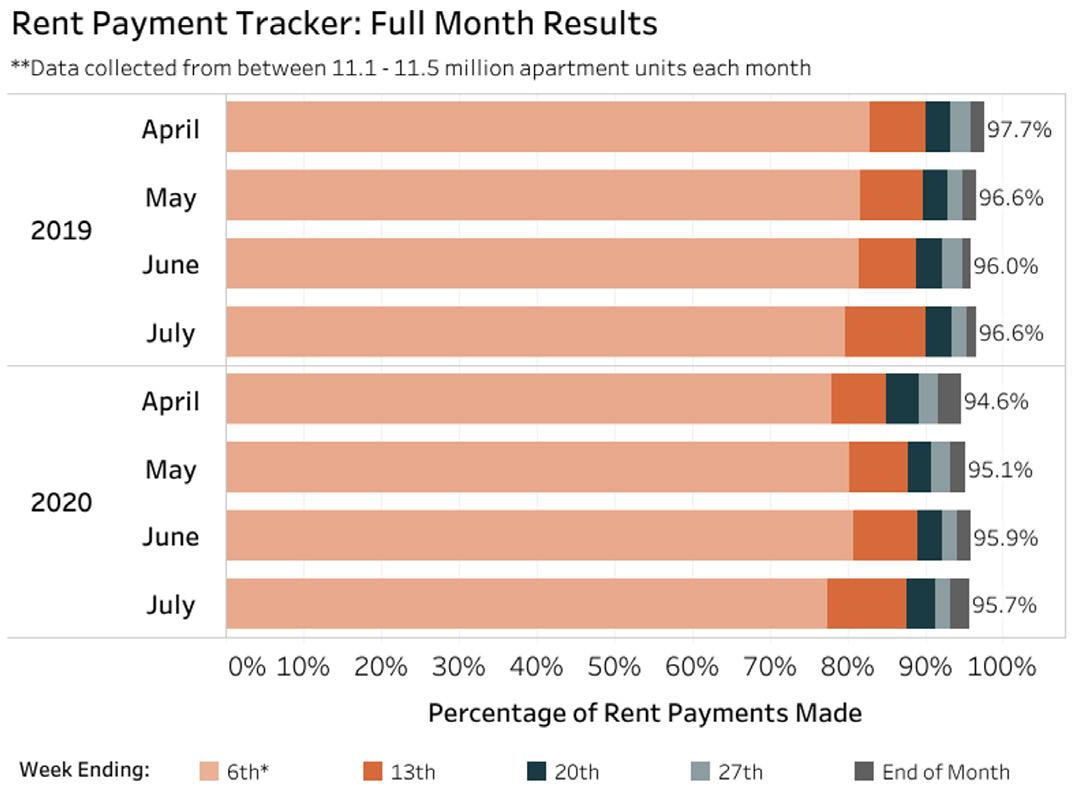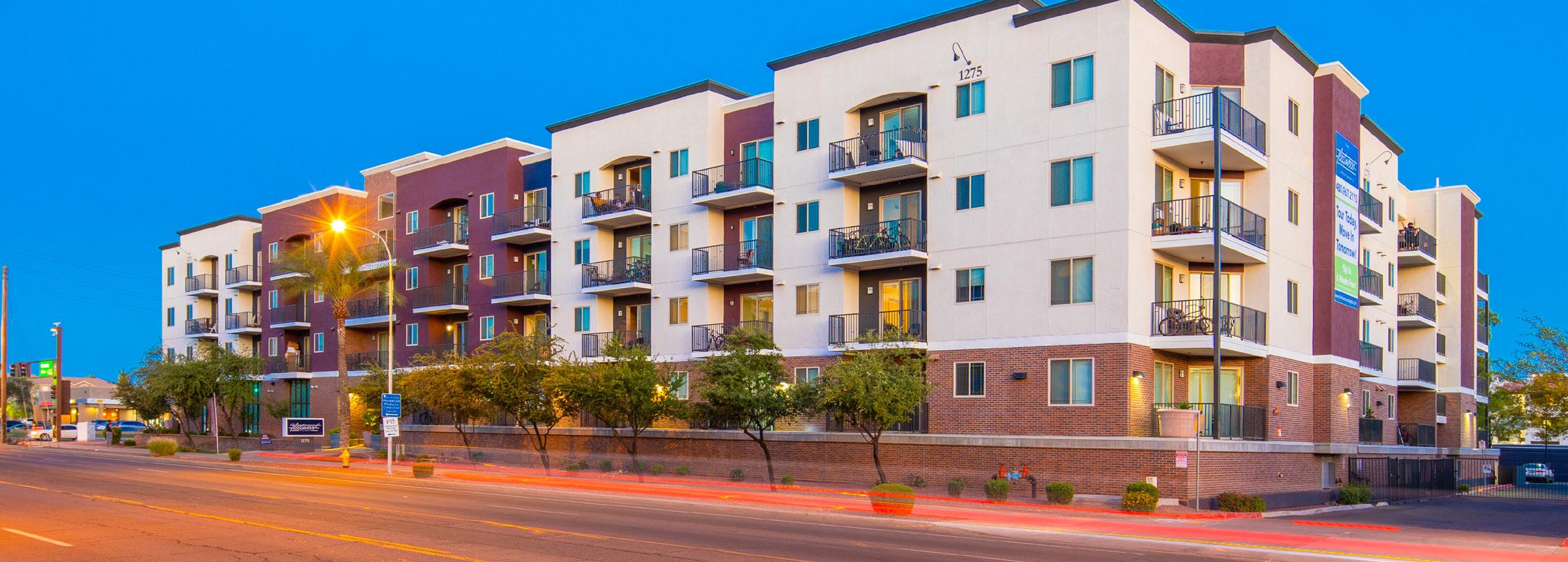
7 minute read
GUEST FEATURE
GUEST FEATURE The Elephant in the Multifamily Boardroom – What Will Happen to Values?
By Scot Eisendrath, Managing Director
Where are real estate values heading? Conventional wisdom and many headlines indicate a big move down may be in store. Contrarians argue that quality real estate may only get more expensive. There are opinions on both sides of the aisle (sorry, had to get in a political reference as the election nears).
According to Green Street Advisors’ July Commercial Property Index (a time series, weighted index of U.S. commercial property values), real estate values are down 11% during the past three months and 8% over the past 12 months (see graph below). Different property types are down from 5% to 25%. During the Great Recession, commercial property values fell 37%, indicating that we may have more room to fall.
Commercial Property Price Index (CPPI) Indexed to 100 in 2007
Source: Green Street Advisors. Commercial Property Price Index (CPPI) weights: retail (20%), office (17.5%), apartment (15%), health care (15%), industrial (10%), lodging (7.5%), net lease (5%), self-storage (5%), manufactured home park (2.5%), and student housing (2.5%). Retail is 50% mall and 50% strip retail.

To gain a better idea of current market sentiment and help determine where values may be headed, I’ve spent my days these past few months talking to appraisers and investment sales brokers, listening to countless webinars and podcasts and voraciously reading the trade publications. My conclusion: there are more opinions than, well, you know.
There are still a very limited number of properties for sale, and there have been very few post-Covid trades, so there are not many data points to analyze, making prognostication difficult. Appraisers rely on evaluating past sales data, which works well in a stable marketplace, so talking to them feels a little bit like reading yesterday’s newspaper. Brokers, ever the optimists, talk about dry powder ready to go and pent-up demand from investors – so, of course it’s a good time to put your property on the market!
Below I lay out the case for real estate values dropping further, values holding steady or potentially even increasing in the future. At the end, I’ll give you my opinion. I don’t even want to speculate on what happens to the values of shopping centers and hotels, so this discussion will focus on apartments.
First, the easy case to make; real estate values are heading south.
• It really is all about jobs. If people can’t find work or wages are declining, prospective residents can’t afford to pay rent. The unemployment rate jumped from 3.5% in February to 14.7% at the height of the pandemic and is now hovering around 11%. Also, keep in mind that the unemployment rate doesn’t consider the millions who are underemployed – people who want jobs but have given up looking for work – so the true unemployment rate is understated.
• Economists believe there will be another wave of layoffs this fall, which could offset job creation from reopenings, increased travel and other factors.
• It’s hard to argue that we aren’t in a riskier environment. Keeping all things equal, to compensate for additional risk, capitalization rates should move higher.
• Consumer confidence is in the dumps and we’re coming off the sharpest drop-in economic activity on record. On the bright side, there’s hopefully nowhere to go but up!?!
• To put it mildly, there is a considerable amount of political and social uncertainty in our country today. Real estate investors need to navigate regulatory risk, including rent control ordinances, vacancy control measures, eviction moratoriums, rent strikes, and the like.
The case that values will hold steady, or even potentially increase.
• It’s amazing what a trillion dollars here, and a trillion dollars there will do to prop up, and potentially even distort, financial markets. Anyone who has reviewed the performance of their IRA or 401(k) is seeing the effects on the stock market. Thus far, the government stimulus has pumped $2 into the U.S. economy for every $1 in lost income, and there’s likely more to come – if Congress and the Administration could learn to compromise a bit.
• It may have been the first thing I learned while earning an undergraduate degree in real estate and urban land economics: real estate is a great inflation hedge. Especially apartments financed with long-term, fixed rate debt, because our leases reset every six to 12 months, which means income generally keeps pace with inflation, and our largest expense, debt service, can be fixed. While annual inflation has been around 2% for quite some time, the trillions in government stimulus could mean significantly higher inflation in the future.

• The bellwether ten-year U.S. Treasury security is in the 0.70% range. Adjusted for inflation, this rate is negative. Fixed rate mortgages for apartments are now 2.5% to 3.0%. According to Marcus & Millichap, the spread between capitalization (cap) rates and the tenyear treasury rate is at 460 basis points, the highest in 30 years. The last time this spread was so wide was in 2011 when it was 450 basis points. The extraordinary cap rate compression from 2011 to 2019 led to a massive increase in apartment values. Bottom line: low interest rates help support and may even propel real estate values higher. • Many of the same factors that made multifamily such a good place to invest prior to the pandemic remain intact, including favorable demographics, declining homeownership and a shortage of housing leading to a massive supply-demand imbalance.
• Apartments, one of the primary commercial real estate food groups, will likely see more focus from institutional investors, like pension funds, university endowments and insurance companies. These investors have real estate allocations and will be skittish to pursue shopping centers, office buildings and hotels, which means more of their allocation may flow to apartments. Additionally, many syndicators and other investors that previously focused on retail, office and other property types may now shift their focus to apartments, because they can’t find opportunities or raise capital in their core competencies. This was a trend prior to the pandemic, and it will likely gain steam coming out of it. The likely result is that more investor capital could flow to multifamily, helping to sustain valuations.
My Crystal Ball:
There has been much speculation on the shape of the economic recovery. Will it be a V-shaped recovery, possibly a U, or maybe take the form of a W? While not as widely discussed, I’m starting to feel it will be a K-shaped recovery, which has been described as one where things improve for the haves and worsen for the have-nots. This would be an unfortunate scenario, leading to further income inequality. We are already seeing this in daily life, highlighted by the stock market. The stock prices for many online retailers, cloud computing companies and biotechnology companies working on a vaccine are going through the roof, while brick-and-mortar retailers, restaurants, airlines, cruise ship operators and hospitality companies have, for the most part, been left for dead. In real estate, there will also be winners and losers. Early indications are that the winners will be industrial (propelled by online retailers), data centers and multifamily. The losers appear to be retail, hospitality and, to a lesser extent, office buildings.
Within each sector, there will also be winners and losers. In multifamily, there will be challenges based on geography (secondary markets may benefit as people flee gateway cities), property class (workforce, class-B housing may outperform class-A and C assets) and tenant type
(properties that cater to “renters by necessity” may outshine luxury p r o p e r t i e s ) . Strong asset management will play a bigger role going forward. Few owners were doing virtual leasing six months ago, and today it is a necessity. Property owners willing to embrace and invest in fresh technology will prosper in this new environment. The financial strength of owners and how properties are financed will likely play bigger roles in the performance of properties. Well capitalized owners will be better able to make the

necessary property improvements to compete in the new environment. Over-leveraged properties, hamstrung with lower cash flow, are less able to make capital improvements.
It’s never easy to predict the future but two things are certain: there will be winners and losers, and Pathfinder’s class-B apartment portfolio and strong markets look well positioned.
Scot Eisendrath is Managing Director of Pathfinder Partners, LLC. He is actively involved with the firm’s financial analysis and underwriting and has spent 20 years in the commercial real estate industry with leading firms. He can be reached at seisendrath@pathfinderfunds.com.






